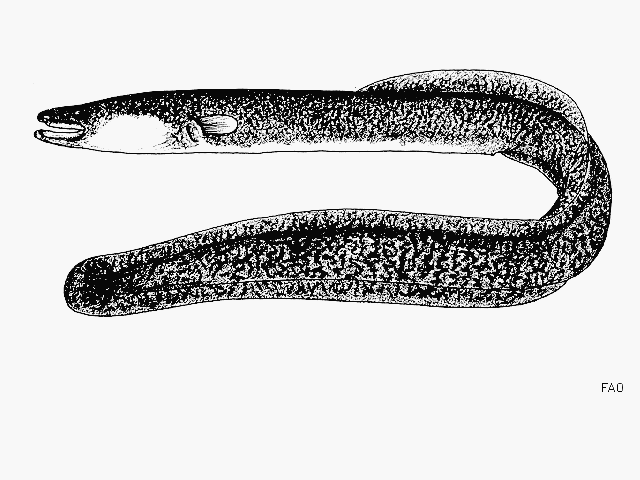| Anguillidae (Freshwater eels) |
| 175 cm TL (male/unsexed); max.weight: 20 kg; max. reported age: 15 years |
|
demersal, catadromous |
| Africa: Kenya to South Africa (Ref. 3506); Reunion and Mauritius (Ref. 33390). Uncommon south of the Save River. Dominant in the Zambezi system and farther north in East Africa. |
|
Dorsal spines (total): 0-0; Anal spines: 0-0. Dorsal fin origin is about midway between pectoral fin and anus. Caudal fin confluent with dorsal and anal fin. Body is mottled with dark brown pigmentation. |
| Migratory species which breeds in the ocean (Ref. 52331), it requires rivers and oceans (Ref. 30558). Young fish migrate upstream with a continued feeding mode, especially on invertebrates found on rocks and logs washed by fast moving waters (Ref. 30558). They inhabit various niches in a river system (Ref. 13337) and penetrate far inland, surmounting formidable barriers in its upstream migration, including the Kariba and Cahora Bassa dams. Adults need moving water to migrate back to the ocean, especially after heavy rains (Ref. 30558). Their food consists of crabs, frogs and insects (Ref. 30558), and even fish, including trout in the streams of the eastern highlands of Zimbabwe (Ref. 2478). Caught with various types of nets. |
|
Not Evaluated
(Ref. 96402)
|
| harmless |
|
Source and more info: www.fishbase.org. For personal, classroom, and other internal use only. Not for publication.
Page created by Jen, 05.08.02,
php script by kbanasihan 06/09/2010 ,
last modified by
dsantos, 20/08/10

